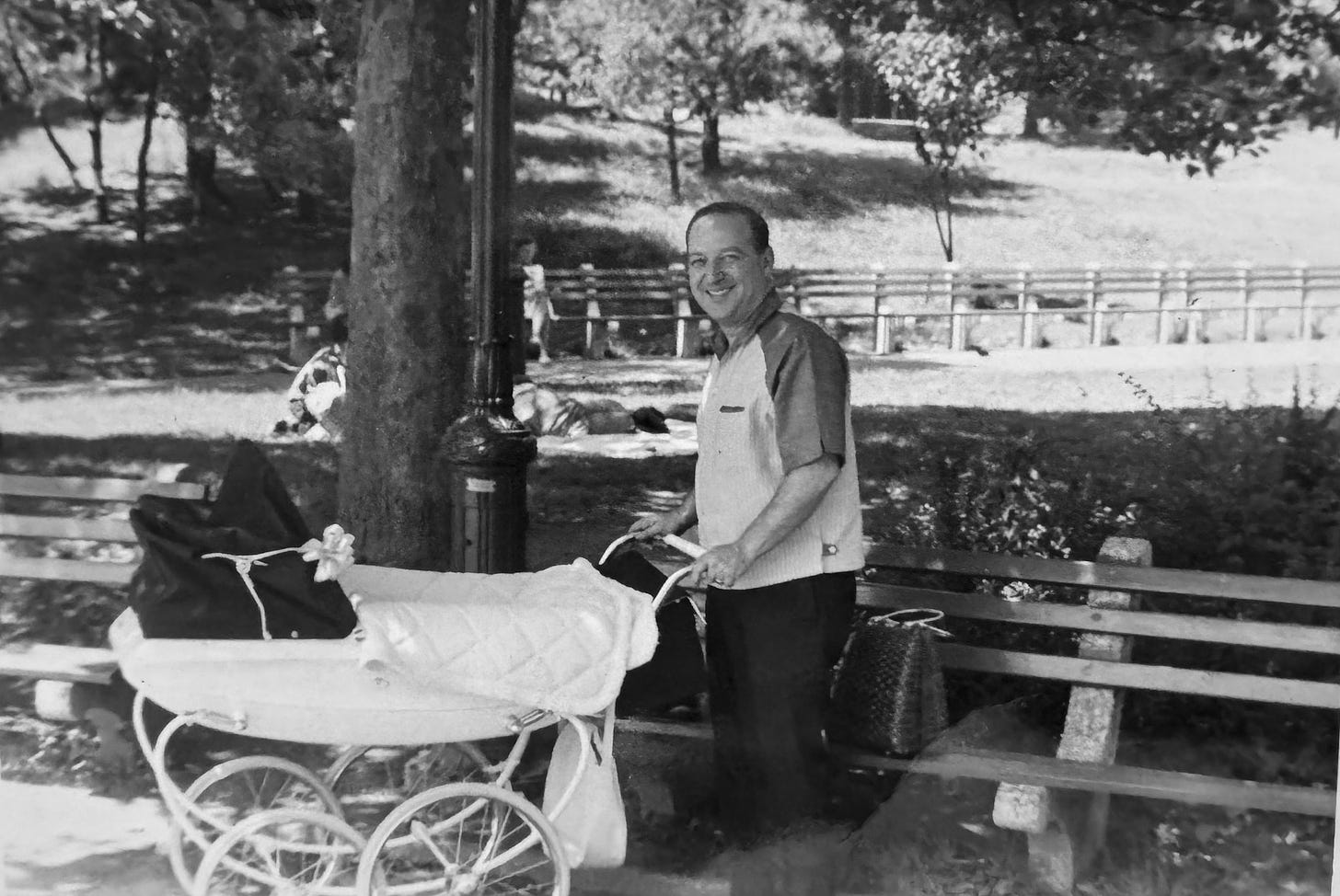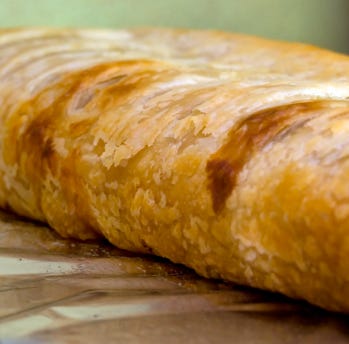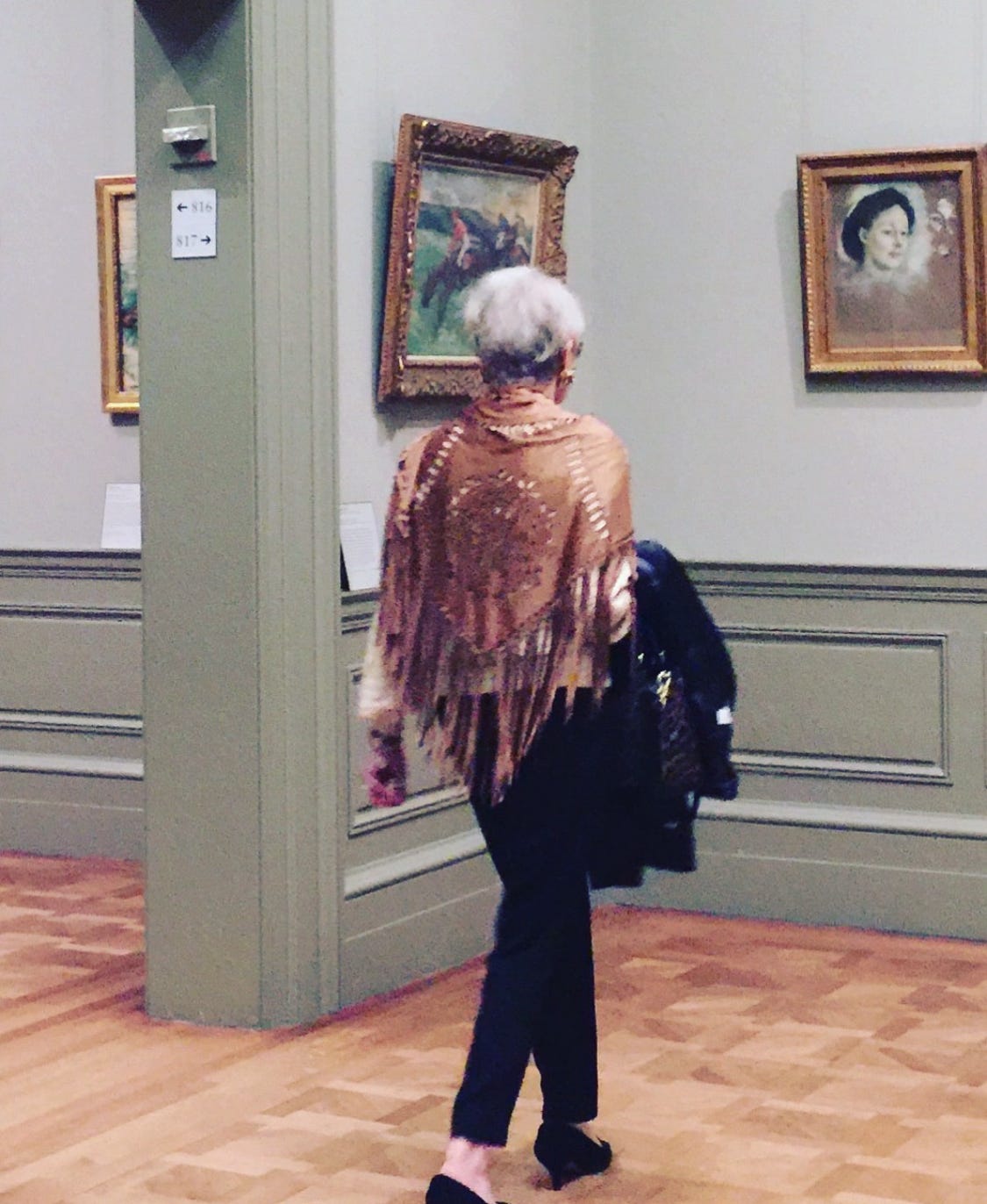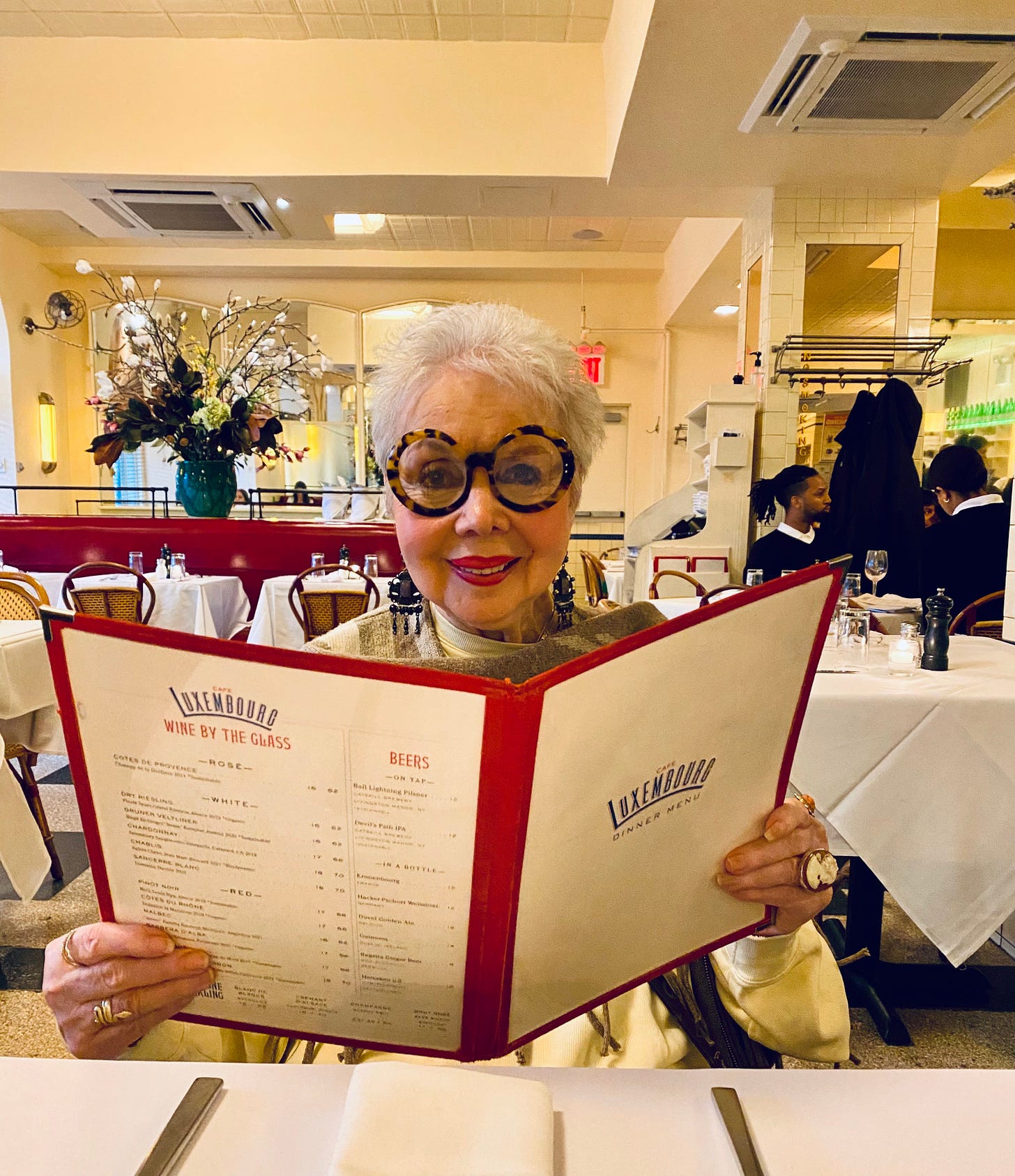We started from East 79th Street, my mother used to tell me. We’d put you in the carriage and wheel you up to Carl Schurz Park over by the river, and then we’d turn around and head downtown, as far as we could go.
I tried to imagine it: my father, not quite into his forties, an advertising executive during the Mad Men days, and my mother, still in her twenties, having recently given up her singing and modeling career, pushing a four-pound me in the English Balmoral pram my grandfather had given them. They took turns on sunny Saturday afternoons, pushing and walking, pushing and walking, against oncoming East Side crowds in the few months before Kennedy was shot, and the remnants of what had been another kind of America would suddenly be gone forever. When they turned around at Twenty-third Street and headed back uptown, they would stop at Mrs. Herbst Bakery on Third Avenue for a slice of strudel and a cup of coffee, and my mother says, even now, that because you had to go two steps up into the bakery, which was quite small, they’d ask for a table near the window and park the pram just outside so they could keep an eye on it while they ate.
My parents were not the type of people to hold three-month-old me on their laps while dining in public, or plopped over their shoulders like a sack of potatoes (I was apparently a big regurgitator and a loud crier who, according to my mother, sounded like Bert Lahr when I was fussing), which meant that they would have to leave me in the pram, parked on the street.
On the other side of the bakery window. In Manhattan.
It feels like such a New York-in-the-early-Sixties thing to do, and to this day, I don’t know whether my mother has the story right. Maybe they wheeled the carriage in and left it by the window on the inside of the bakery, sat down and drank their kaffee mit schlagg while I was cooed over by the older Hungarian strudel makers with the shadow of war still clouding their eyes. Maybe not. Maybe it’s a manifestation of my mother’s tentacular imagination which has grown fainter with age but is still veneered like the caramel on a Dobos Torte with a thin layer of chronic fibbing.
If you are a New Yorker of a certain age, you’re forced to accept that the concept of the weekend stroll followed by a slice of strudel — and of being a flâneur — is now about as alien as sock garters are to a middle schooler.
I’ll never know the answer; maybe it doesn’t matter. But I do know for certain that my parents were both flâneurs. The act of walking was an important part of their weekend ritual, and the stop at Mrs. Herbst their reward for a long afternoon stroll that might have taken them (and me) down Third from their apartment on East 79th Street to Twenty-third Street, all the way over to Fifth, back up Fifth past The Frick, The Guggenheim, The Metropolitan Museum of Art, back over to Third, and to Mrs. Herbst, where they had their coffee and strudel while I slept in my pram on one side or the other of the bakery window.
I acknowledge the frivolity of writing about Manhattan in the Sixties, and walking, and strudel. But I write about this now because my country as I know it may change radically in a few days, and it may become utterly unrecognizable except to those who are old enough to remember what the world was like the last time a fascist psychopath convinced millions to follow him. It’s impossibly hard for me to even believe that I’m saying these words. So I write about this now because I want to remember the sheer, glorious mundanity of a specific time and place that has been mythologized over the years in film, in music, and in books as a period when Scribner’s on Fifth was still a bookstore and not a Sephora, and Abercrombie and Fitch was the twelve-story sporting shop on East 45th Street and Madison Avenue that outfitted Lindbergh for his flight to Paris and not a place to buy your son pre-ripped jeans that hang far enough beneath his hipbones for the world to see what brand of underwear he’s got on; it was when my mother and I walked to Madame Romaine de Lyon almost every weekend for omelets, even while we weren’t speaking to each other (which was often). It was my normal, what I knew, and how and where I was raised. This is the part of New York that still lives in my viscera, and it will stay there until I take my last breath, no matter how the world changes.
When Nora Ephron wrote her New York Times piece about Mrs. Herbst right after Christmas in 2005, I actually cried. At the risk of sounding hyperbolic, there was so much attached to and associated with the place. My father had died suddenly three years before the article appeared; my Grandma Clara, the eldest of five children born to a nineteenth-century cavalry officer from Budapest and who always requested that we buy her a whole strip of cabbage strudel and drive it home to her in Forest Hills, seven miles away from Manhattan, died in 1982. Many of the beautiful older buildings dotting my parents’ walking route were replaced by glass and steel monolithic erections that sit mostly empty. As for a slice of cabbage strudel and a cup of coffee after a long, languorous walk: if you are a New Yorker of a certain age (I’m 61), you’re forced to accept that the concept of the weekend stroll followed by a slice of strudel — and of being a flâneur — is now about as alien as sock garters are to a middle schooler.
In his wonderful book, The Flâneur, Edmund White writes Americans are particularly ill-suited to be flaneurs. They are always driven by the urge towards self-improvement. This is only partially true — think of Maira Kalman, Fran Lebowitz, and of course, Nora — and part of the reason why very few people seem to stroll anymore. No one takes what my mittel-Europan grandfather would call a shpatzir. Instead, we walk with intention: hitting our step count (mine is 10,000), getting to our next Pilates class, making it to a work meeting on time while listening to a podcast on productivity. Whenever I’m in the city, I hit my step count within two hours without even thinking about it because I’m marching from Grand Central over to Fifth, getting a taxi up to my mother’s apartment on the West Side, walking over to Broadway to get another cab back to the station, and then running for the train. (Fifteen thousand steps, easily.) When I’m home in Connecticut, I rarely make it to five thousand despite walking the dog, going grocery shopping, going to the gym, and working in the garden. In the days before step-counters and FitBits and Apple Watches, who even thought about such things?
True to my DNA, I went to college in a city ideal for the flâneur. It was my father — he had lived in Boston for three years before marrying my mother — who told me where to start (the west end of Commonwealth Avenue, near my dorm), where to walk (east on Commonwealth or Beacon, or along the Charles River; up to Arlington Street and into the Public Gardens; up to Charles Street on Beacon Hill to Louisburg Square at the top of the Hill; back down again to Beacon Street; back into the Gardens; past the George Washington statue onto Arlington; over to Newbury Street; west on Newbury to Mass Avenue; down Mass Avenue to Commonwealth; west on Commonwealth and back to my dorm), and where to stop for a coffee along the way. There was no intention, no plan; it was walking for the sake of walking, of looking at the world around me. It would have been nice if a slice of strudel had been involved, but alas, no.
When I moved back to New York after college, I would regularly walk from my apartment on East 57th Street up to 60th and Fifth, up Fifth to 72nd Street, across 72nd and through Central Park, over to my mother and stepfather’s apartment on Westend Avenue and 70th. I’d have lunch with my mother, and then I’d walk home the same way. Even my Grandma Clara would leave her apartment in Forest Hills every morning at ten, walk the few blocks to Queens Boulevard, down towards Rego Park and stop for lunch at Woolworth’s where her (as she put it) ladyfriend who worked behind the counter fed her a grilled cheese sandwich and a small cup of tomato soup. And then she’d walk home, even as she was beginning to suffer from congestive heart failure.
I’m a walker, my mother announced to the emergency room doctor one December Saturday night in 2016.
They thought that she, at eighty-one, was exaggerating and that she meant maybe a few city blocks a couple of times a week; they were wrong. Long widowed, she spent her days — literally, every day — walking from her Upper West Side apartment down to 57th Street, across to the East Side, down Fifth to Saks where she’d have lunch (tarragon chicken salad with walnuts), and then home again. Sometimes, if she wasn’t furious with me (and often if she was) she’d take a break on 57th and wait for me in my apartment building lobby, fight with me, and then walk home. So when she suffered a trimalleolar fracture of her right ankle — all three ankle bones snapped like dry kindling — it felt to all of us like the beginning of the last phase of her life because walking her beloved city was probably no longer going to be possible. Her life as a flâneur began before she married my father, and now it was likely over. But really: it wasn’t entirely because of the fall, or because all of those destinations — Mrs. Herbst, and Madame Romaine de Lyon, and even Soup Burg (where she had a bunless burger once a week) — had closed; it was because New York had changed right in front of her, and she had changed with it.
My mother turned eighty-nine this week. She walks very badly now (even with the cane that she would like to wrap around my neck when I remind her to use it), and, as happened with my grandmother, her universe has grown smaller. We only ever go out to eat at Cafe Luxembourg, one block from her apartment. We love it and always have; they always make a fuss over her, and she hastens to tell them that we were there when they opened, back when New York was still New York, she says, and I could walk it from one end to the other.









This is such a tender, beautiful read ♥️ thank you!
Thank you for this heart opener. Tenderness for your parents, their lives and your own relationship to them and that magical city. Sometimes memories are enough . Such a gift this piece .